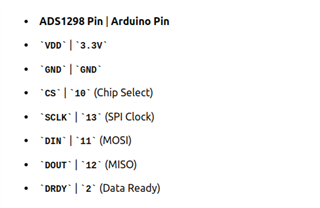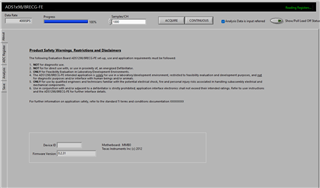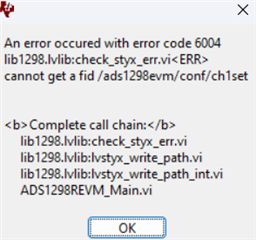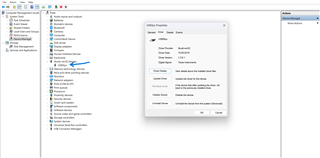Other Parts Discussed in Thread: ADS1298
Tool/software:
Hey there,
I am using ADS1298ECGFE-PKD BOARD. I have unplugged the MMBQ motherboard and working with the ads1298 board. The problem is that when I connect the ads1298 board to an Arduino, I am unable to read the device ID of the board, which stops me from using it. I am receiving 0x00. Do I need to adjust any jumper settings or do I need to make a code change? I've included my Arduino code and connections below; could you please assist me in fixing this?
/*this is arduino coe with ads1298*/
#include <SPI.h>
// Pin definitions
const int CS_PIN = 10;
const int DRDY_PIN = 2;
const int RESET_PIN = 9; // Connect RESET pin of ADS1298 to Arduino pin 9
// ADS1298 Command Definitions
#define RREG 0x20 // Read Register Command
#define RESET 0x06 // Reset Command
// Register Addresses
#define ID_REG 0x00 // ID Register Address
void setup() {
Serial.begin(115200);
// Initialize SPI
SPI.begin();
SPI.setDataMode(SPI_MODE1);
SPI.setClockDivider(SPI_CLOCK_DIV16);
SPI.setBitOrder(MSBFIRST);
// Initialize Chip Select Pin
pinMode(CS_PIN, OUTPUT);
digitalWrite(CS_PIN, HIGH);
// Initialize Data Ready Pin
pinMode(DRDY_PIN, INPUT);
// Initialize Reset Pin
pinMode(RESET_PIN, OUTPUT);
digitalWrite(RESET_PIN, HIGH);
// Power up sequence
powerUpADS1298();
// Reset the ADS1298
resetADS1298();
delay(100); // Give some time for reset to complete
}
void loop() {
// Read Device ID
byte deviceID = readRegister(ID_REG);
Serial.print("Device ID: 0x");
Serial.println(deviceID, HEX);
// Delay between reads
delay(1000); // Adjust the delay as needed (e.g., 1 second)
}
void powerUpADS1298() {
// Power up sequence: Ensure AVDD is up before DVDD
// Assume AVDD and DVDD are connected to appropriate power supplies
// This function is just a placeholder if you need to handle any specific power-up logic
delay(100); // Ensure proper delay after power-up
}
void resetADS1298() {
// Hardware reset
digitalWrite(RESET_PIN, LOW);
delay(10); // Hold reset low for 10ms
digitalWrite(RESET_PIN, HIGH);
delay(10); // Delay after reset
// Software reset (optional, depending on your setup)
digitalWrite(CS_PIN, LOW);
SPI.transfer(RESET);
digitalWrite(CS_PIN, HIGH);
delay(10); // Delay after software reset
}
byte readRegister(byte address) {
byte result = 0;
digitalWrite(CS_PIN, LOW);
delay(1); // Small delay after pulling CS low
// Send the RREG command along with the address
SPI.transfer(RREG | address);
delayMicroseconds(10); // Small delay for command processing
// Send the number of registers to read minus one (0 means 1 register)
SPI.transfer(0x00);
delayMicroseconds(10); // Small delay for command processing
// Read the result
result = SPI.transfer(0x00);
digitalWrite(CS_PIN, HIGH);
delay(1); // Small delay after pulling CS high
return result;
}
/*this is pin configurations with Arduino*/






